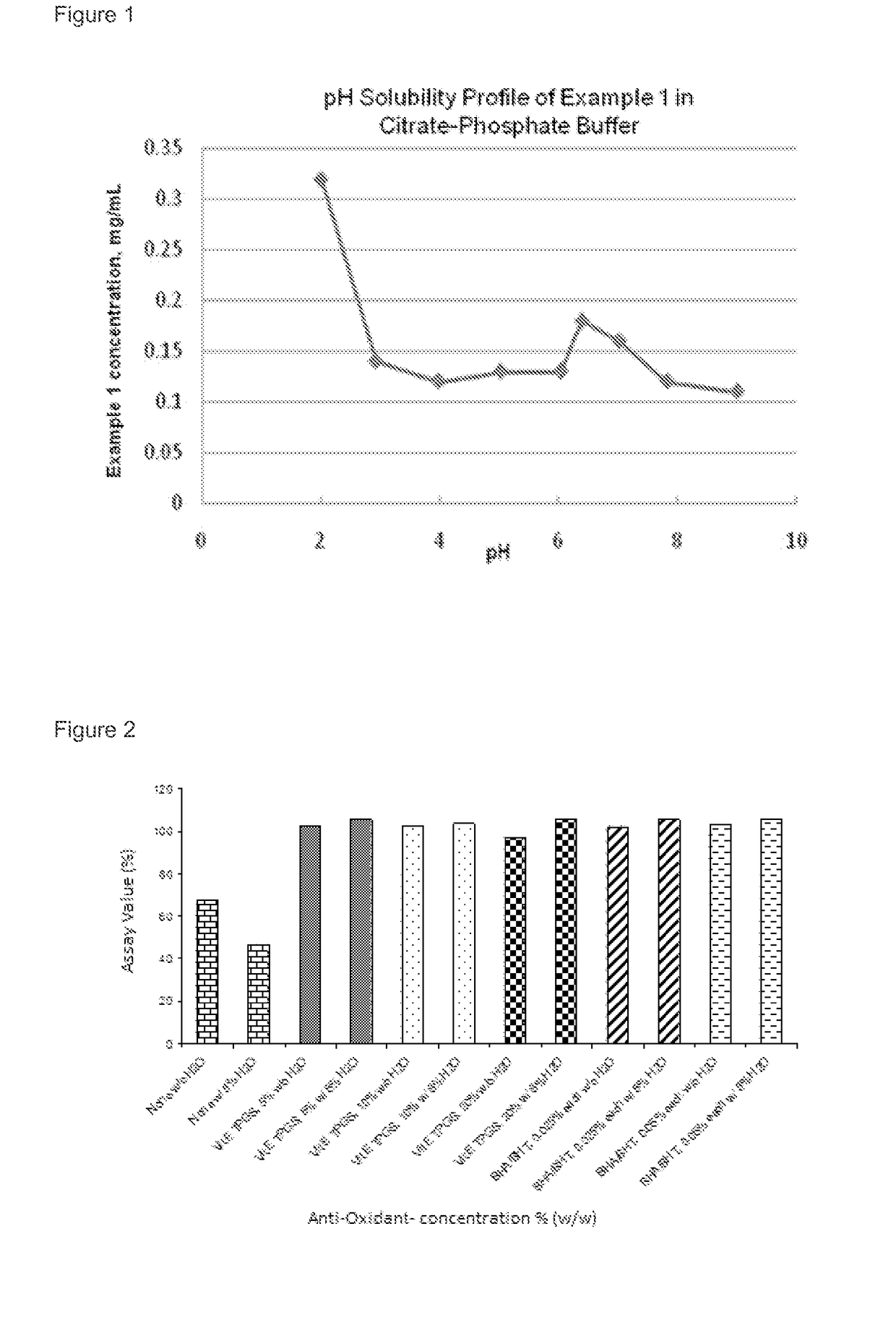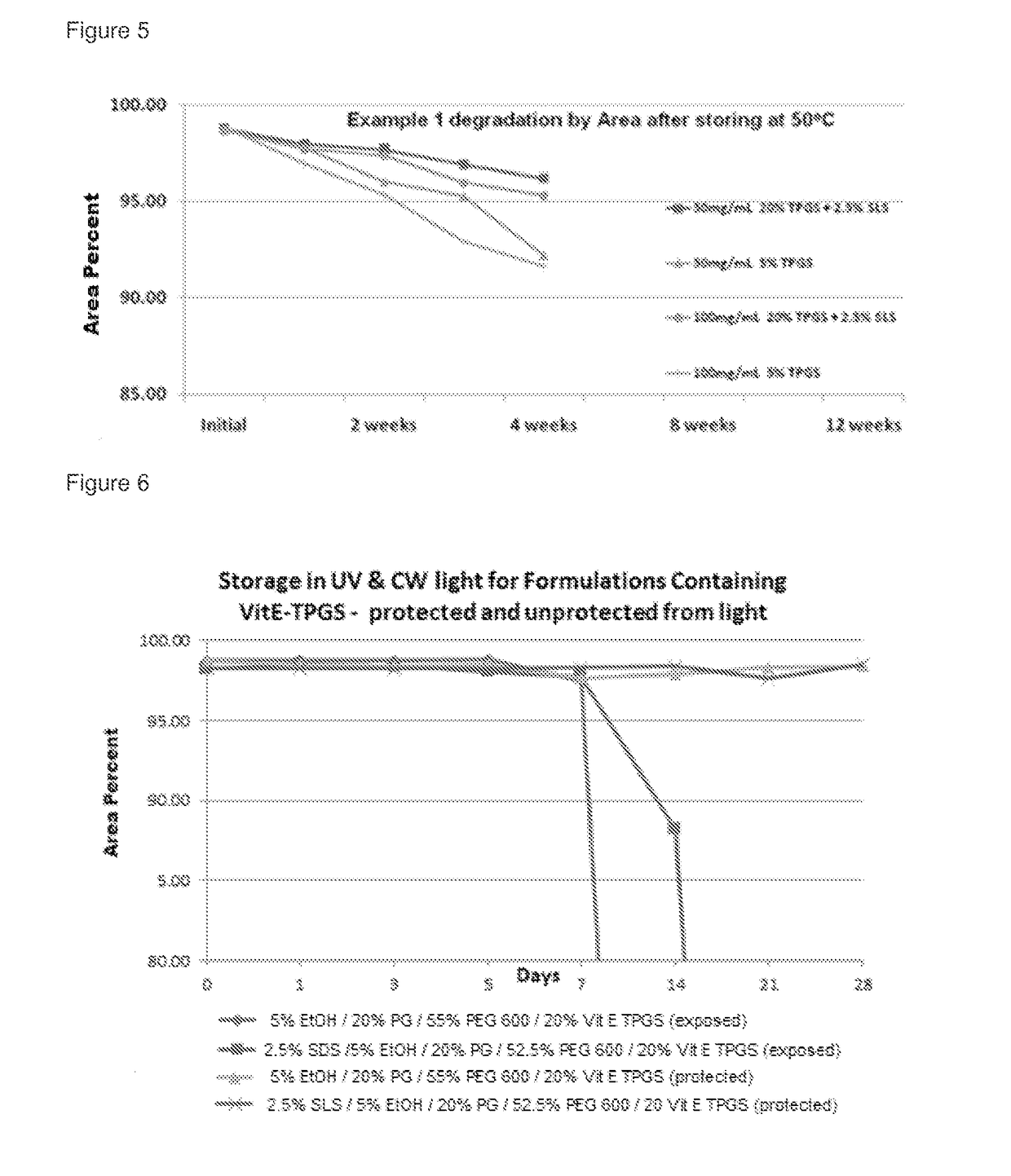Compositions and Uses of Amidine Derivatives
a technology of derivatives and amidines, applied in the field of amidine derivatives, can solve the problems of affecting the function of the body, and posing the greatest risk, and causing the most damage, and achieving the effects of disfiguring and debilitating facial and peripheral attacks, and exploratory procedures or unnecessary surgery
- Summary
- Abstract
- Description
- Claims
- Application Information
AI Technical Summary
Benefits of technology
Problems solved by technology
Method used
Image
Examples
example 1
of 3-[2-(4-carbamimidoyl-phenylcarbamoyl)-5-methoxy-4-vinyl-phenyl]-6-(cyclopropylmethyl-carbamoyl)-pyridine-2-carboxylic acid
[1061]The synthesis of the above compound and intermediates is described below. In this section, the following abbreviations are used:
Ac = acetylMEM = (2-methoxyethoxy)methylBu = butylTHF = tetrahydrofuranMe = methylDME = 1,2-dimethoxyethaneEt = ethylTEA = triethylamineBn = benzylmin = minuteDMSO = dimethyl sulfoxideh = hourMP = melting pointMS = mass spectrumNMR = nuclear magneticEDCI = 1-ethyl-3-(3-dimethylamino-resonance spectrumpropyl)-carbodiimideIR = infra-red spectrumTLC = thin layer chromatographyDMF = N,N-dimethylformamideRf = retardation factorEther = diethyl etherES = electrospray ionisationDIPEA = N,N-diisopropyl-DCC = N,N′-dicyclohexylcarbodiimideethylamine
[1062]The synthesis of starting material, (4-(benzyloxy)-2-formyl-5-methoxyphenyl)boronic acid (1f) is described in Scheme 1.
Preparation of 6-bromobenzo[d][1,3]dioxole-5-carbaldehyde (1 b)
[1063...
example 1a
n of 3-[2-(4-Carbamimidoylphenylcarbamoyl)-5-methoxy-4-vinylphenyl]-6-(cyclopropylmethylcarbamoyl)pyridine-2-carboxylic acid hydrochloride in Form C
[1112]
[1113]The jacket of a 10 L glass reactor was set to −5° C. To the reactor was charged 2-(6-((cyclopropylmethyl)carbamoyl)-2-(methoxycarbonyl)-pyridin-3-yl)-4-methoxy-5-vinylbenzoic acid (6d) prepared in Step (11) of Example 1 (500 g, 1.22 mol), 4-amino-benzamidine.2HCl (280 g, 1.34 mol), and 2-propanol (4.05 kg). The mixture was cooled to 0.3° C., and pyridine (210 g, 2.62 mol) followed by EDCl-HCl (310 g, 1.61 mol) was added. The mixture was stirred at −1.1 to −0.3° C. for 22 hrs followed by addition of the second portion of EDCl.HCl (58 g, 0.30 mol). The temperature of jacket was set to 14.0° C., and the mixture was stirred for 89 hrs. The precipitate was filtered, and washed with 1.32 kg of 2-propanol.
[1114]The wet product (8a) was recharged to the reactor followed by addition of acetonitrile (1.6 kg) and water (0.57 kg). The mi...
example-1b
n of 3-[2-(4-Carbamimidoylphenylcarbamoyl)-5-methoxy-4-vinylphenyl]-6-(cyclopropylmethylcarbamoyl)pyridine-2-carboxylic acid hydrochloride in Form A
[1116]The procedure was carried out in an identical manner to Example 1A, with the exception that after the final filtration the filter cake was rinsed with 2.87 kg methyl tert-butyl ether instead of 2.87 kg water, and pulled dry. The product was dried at 40-43° C. and 50 mbar to furnish 3-[2-(4-carbamimidoylphenylcarbamoyl)-5-methoxy-4-vinylphenyl]-6-(cyclopropylmethylcarbamoyl)pyridine-2-carboxylic acid hydrochloride (7b) as Form A.
PUM
| Property | Measurement | Unit |
|---|---|---|
| Fraction | aaaaa | aaaaa |
| Fraction | aaaaa | aaaaa |
| Fraction | aaaaa | aaaaa |
Abstract
Description
Claims
Application Information
 Login to View More
Login to View More - R&D
- Intellectual Property
- Life Sciences
- Materials
- Tech Scout
- Unparalleled Data Quality
- Higher Quality Content
- 60% Fewer Hallucinations
Browse by: Latest US Patents, China's latest patents, Technical Efficacy Thesaurus, Application Domain, Technology Topic, Popular Technical Reports.
© 2025 PatSnap. All rights reserved.Legal|Privacy policy|Modern Slavery Act Transparency Statement|Sitemap|About US| Contact US: help@patsnap.com



